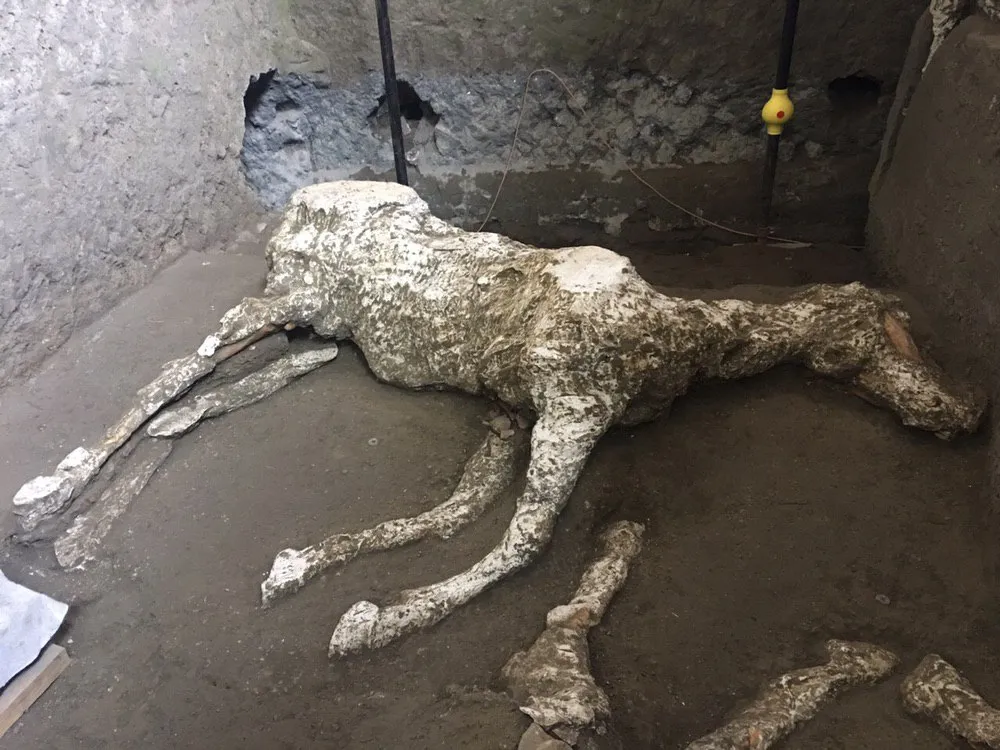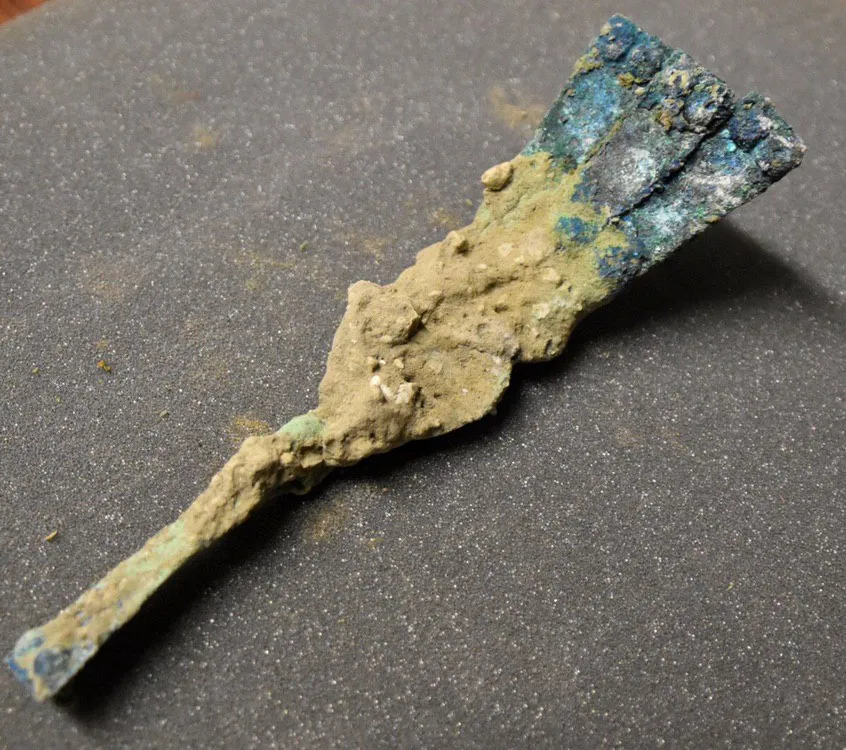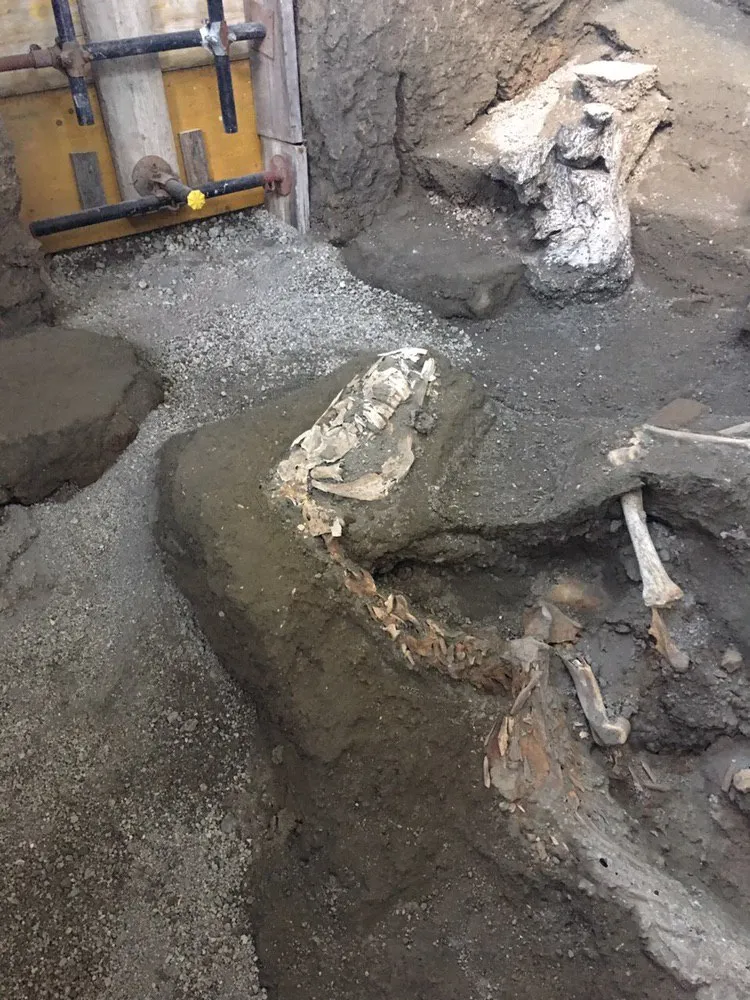Preserved Horse, Saddled, Harnessed and Ready to Flee, Found in Villa Outside Pompeii
Archaeologists found ornamental pieces of a harness and saddle, suggesting the horse was ready to ride when the volcano blew its top
The horse was saddled and harnessed, presumably ready to go at a moment’s notice, when Mount Vesuvius erupted. Suffice it to say, the horse, which was waiting in a stable of a villa just outside the walls of the city of Pompeii, didn’t make it. The BBC reports that archaeologists unearthed the horse's remains along with two others, including bits and pieces of its harness, during recent excavations.
The horses—as well as the city’s inhabitants—didn’t stand a chance when the sudden wave of hot ash and gas enveloped the area in 79 A.D.
According to a press release, the finds come out of a joint operation of the Archaeological Park with the Public Prosecutor’s Office of Torre Annunziata, the Carabinieri Group Command of Torre Annunziata and the Naples Command for the Protection of Cultural Heritage that began excavating the area last spring.
The excavation of the villa was intended to stop looters who had been tunneling into the site. The work exposed rooms of the stately house, including one identified as the stable. Previously, archaeologists announced the discovery of the remains of one complete horse and the legs of a second there. More thorough excavations of the stable began over the summer, which led to the discovery of the third horse and pieces of an elaborate military harness, which included wooden elements and five bronze pieces known to be used in ceremonies like military parades.
It’s believed looters may have taken other pieces of the harness. There are also indications that the horse was covered in a blanket and may have been carrying a bag.
“It’s a very important find because it's is particularly rare,” Massimo Osanna, director of the Pompeii archaeological site, tells news agency ANSA. “The three horses, perhaps like the first which was discovered and analyzed, must have belonged to the ‘noblest breed’ of display animals, as indicated by their imposing size - likely the result of selective breeding - and the quality of their iron and bronze harnesses,” he says in the release.
The villa where the horse was uncovered is pretty rare, too, and is believed to have belonged to a general or high-ranking military magistrate. According to ANSA, it was rediscovered in the early 20th century by landowner Marquis Onofrio Inperiali, who excavated parts of the villa and sold off some of its artifacts before covering it back up. The house, which overlooked the Bay of Naples and the Isle of Capri, included seaside terraces, a storehouse just for wine and oil, a kitchen garden and quarters for servants. It was also surrounded by cultivated agricultural land. Limited digs in the 1950s uncovered frescoes there, as well.
Life from Pompeii continues to surface. Last May, the Archeological Park reported it had found four other rooms in the villa aside from the stable, including the tomb of a man, a wooden bed and an entire street of grand houses with balconies nearby. Last May, archaeologists in Pompeii also found the body of man who appeared to have his head crushed by a stone block (it turned out to be a post-mortem injury), and just last month diggers unearthed a perfectly preserved erotic fresco of Leda and the Swan at another villa.
The Pompeii Archaeological Park announced it will fund more excavations of the villa, so expect more revelations to come. One day you might even have the chance to see the villa for yourself, as it may eventually open to the public.


